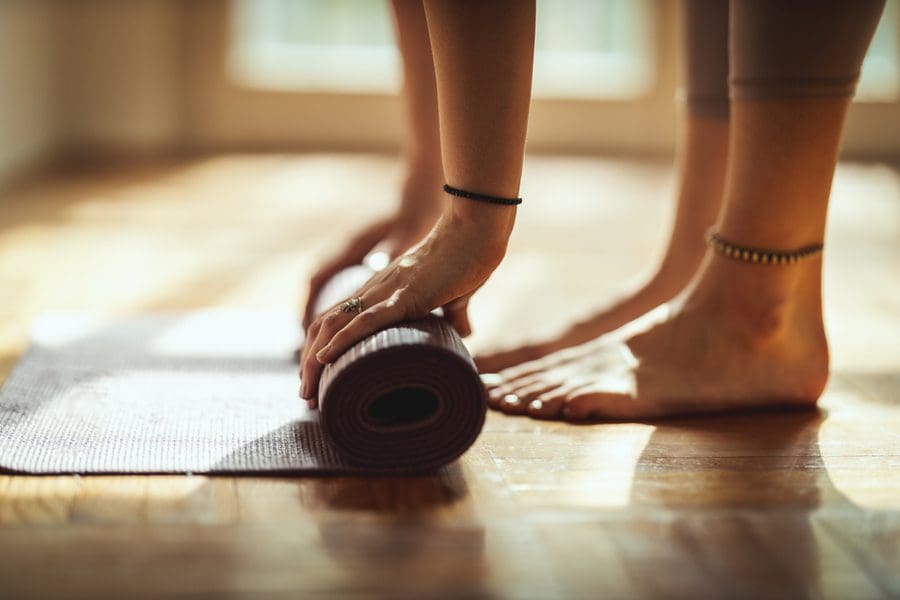Every yoga practice benefits from the usage of the right mat. If you’re wondering, yes, it is possible to choose the wrong one. While you may be tempted to opt for the prettiest, least expensive, or otherwise most convenient option, you should consider these elements before any purchase.
Thickness
Not all yoga mats are made equally, and the thickness of a mat differs on the brand and the mat itself. While this sometimes comes down to preference, as some individuals prefer a thin mat while others prefer several millimeters of thickness, you should also consider the type of poses involved in your daily practice.
For instance, if you are someone that typically modifies yoga poses and therefore find yourself frequently using towels or folding your mat to alleviate pressure on your knees, you may want to opt for a thicker mat, as this will remove that pressure without extra accessories needed.
Conversely, if you’re a nature fanatic and frequently take your practice outside, you may want a soft but strong barrier between yourself and the sand or grass below you, a thinner mat may be more your speed.
Non-Slip Performance (both sides)
There’s nothing more agitating than when your yoga mat is slipping all over the place during your practice. It not only prevents you from fully immersing yourself in your routine, but it also can lead to injury if you slip out of a pose and fall because of it.
For this reason, you should be looking for non-slip mats. This will ensure they not only stay firmly on the ground where they are placed but will also offer you a better grip when you are completing your yoga poses.
Sweat Resistant
Even if you aren’t likely to sweat often, every once in a while, you’re bound to build up a sweat in a yoga practice, and that sweat can make it challenging to hold poses like downward dog that require a stable foundation.
Sweat-resistant mats help to eliminate this issue, as even the sweatiest palms will stay in place, ensuring your pose is as perfect as it should be. While this isn’t a deal-breaker (as you can always towel off), it does help you move seamlessly throughout your flow.
Durability
Again, depending on your typical practice, you’ll be looking at varying levels of durability when it comes to your yoga mat. For beginners, you’re likely looking for a mat that will help you learn the most basic of poses. For advanced yogis, you’re likely looking for a mat that will withstand your daily practice, regardless of its complexity.
For this reason, you should always pay attention to the durability of various yoga mats, something that you can discern through product reviews of reputable yoga brands. While the more durable options come with a higher price tag, it’s worth it if it means you’ll purchase one mat that’ll last as long as you need it to.
Transportability
Lastly, where you practice makes a world of difference as well. If you’re a home workout type, you likely don’t care how well a yoga mat travels, as you’ll pull it out of your closet when you’re ready to work out.
However, for avid gym-goers, you’re probably looking for a mat that travels well, whether that means it is easy to clean or it comes with a carrying case or strap. The way you use your mat is different depending on where you bring it, so make sure you’re looking for an option that has all the bells and whistles you’ll need in that regard. Again, it’s better to spend the money upfront for a long-lasting option than it is to hold back now and have to replace it after a few months.
While it may appear to be “just a mat” on the surface, the yoga mat you choose should be a reflection of your practice. Making the wrong choice can lead to injury, lower your interest in returning to the mat daily, and even end up costing you more in the long run, so take the time to consider these elements when selecting the perfect yoga mat for your practice. Namaste!






